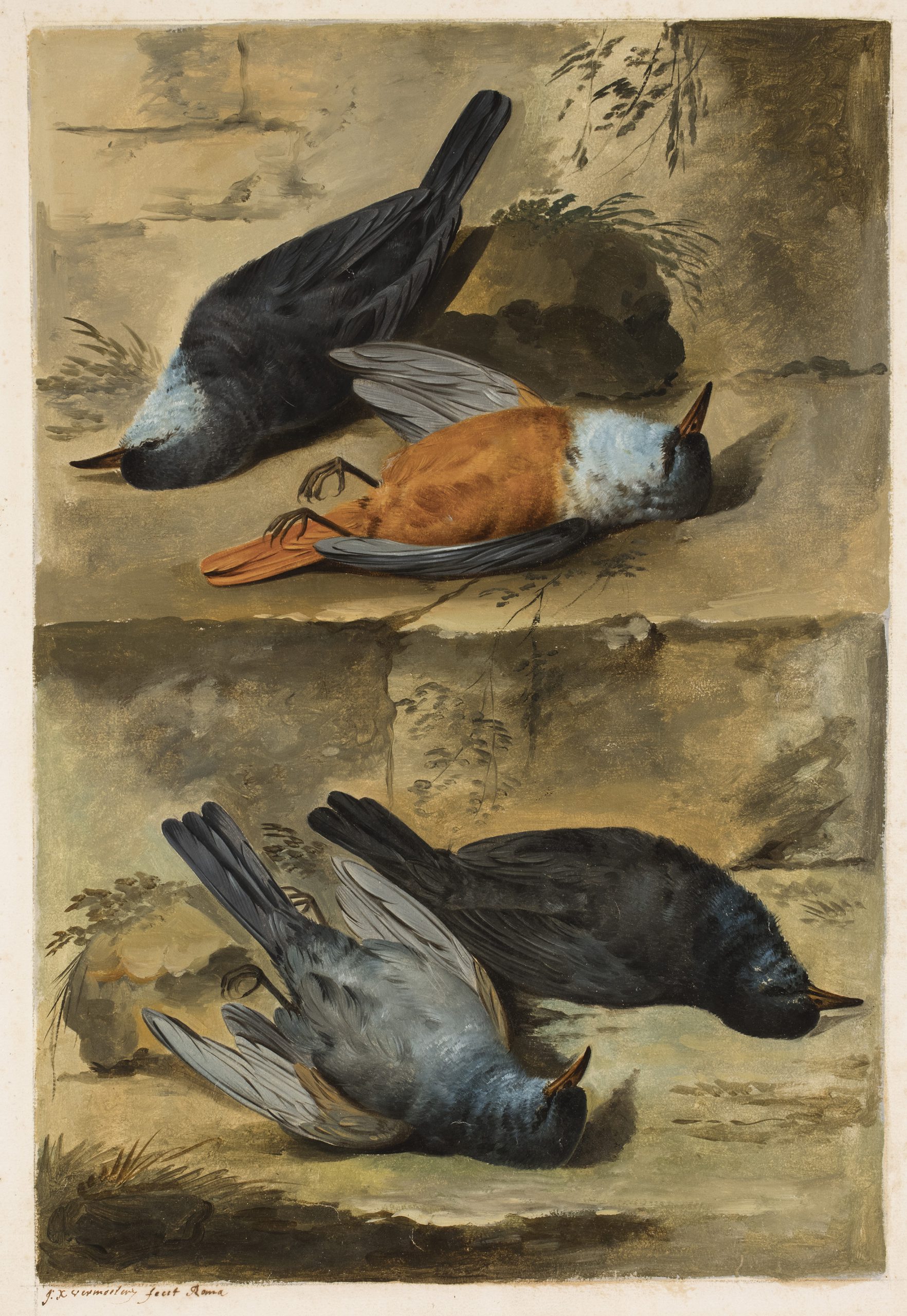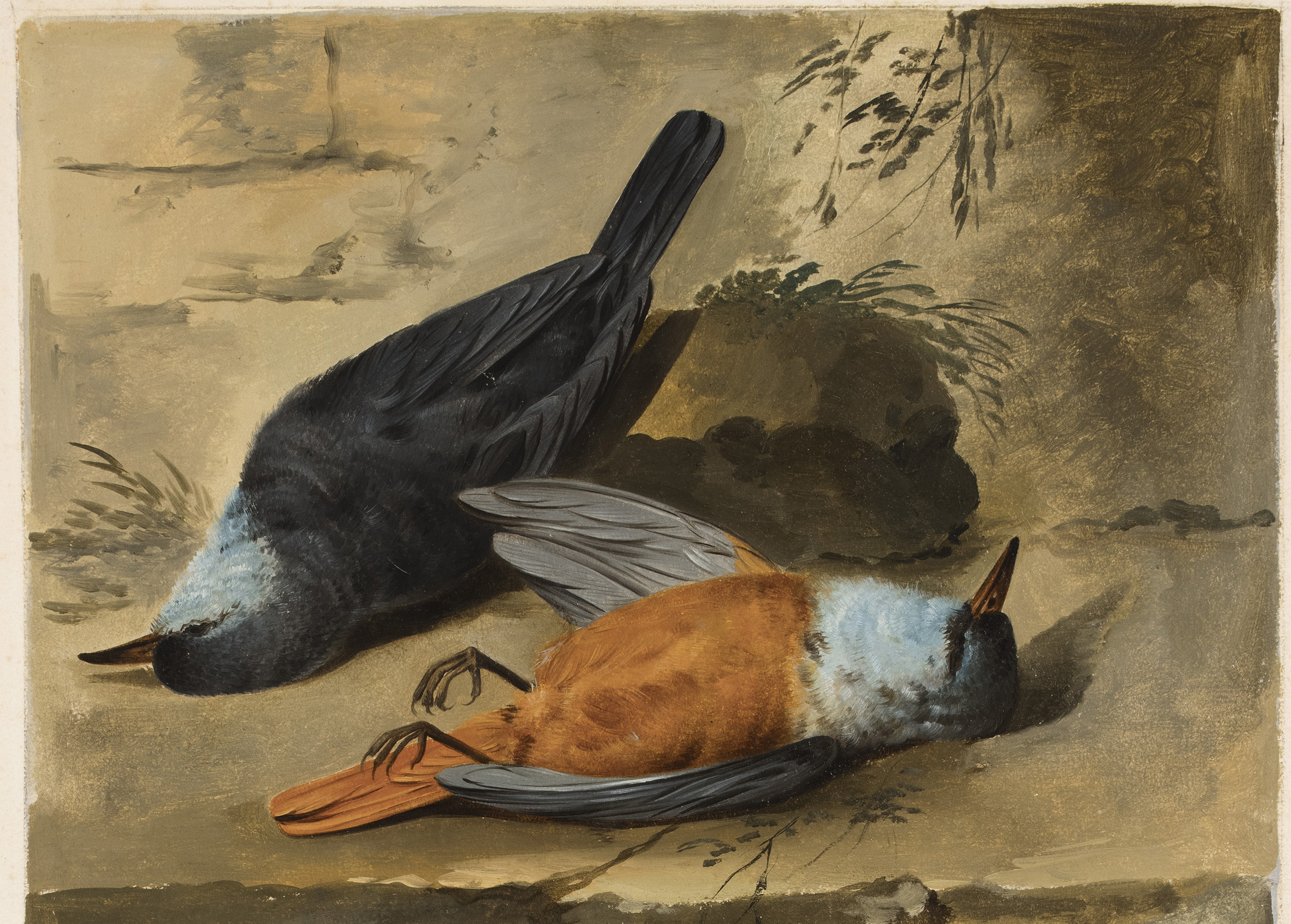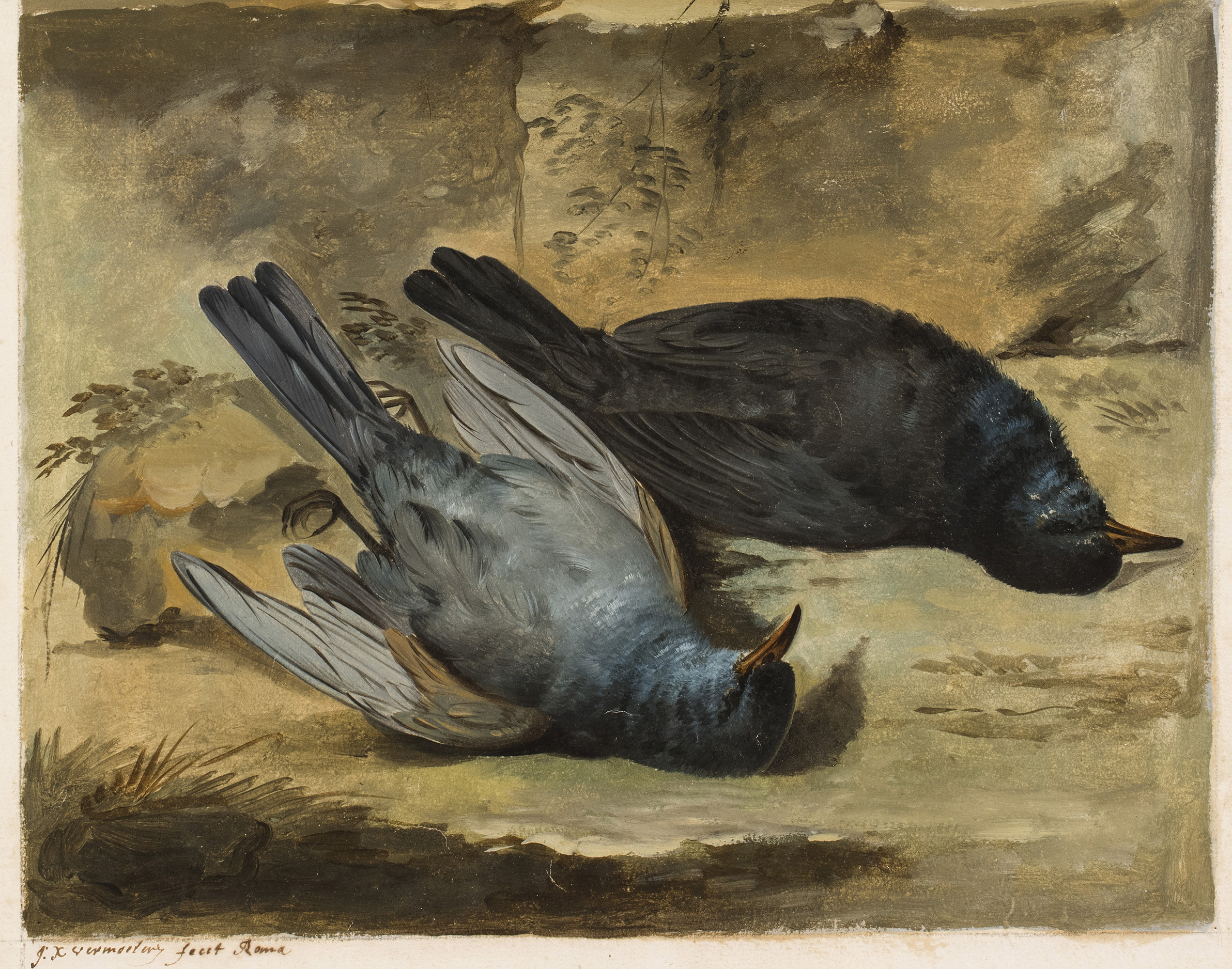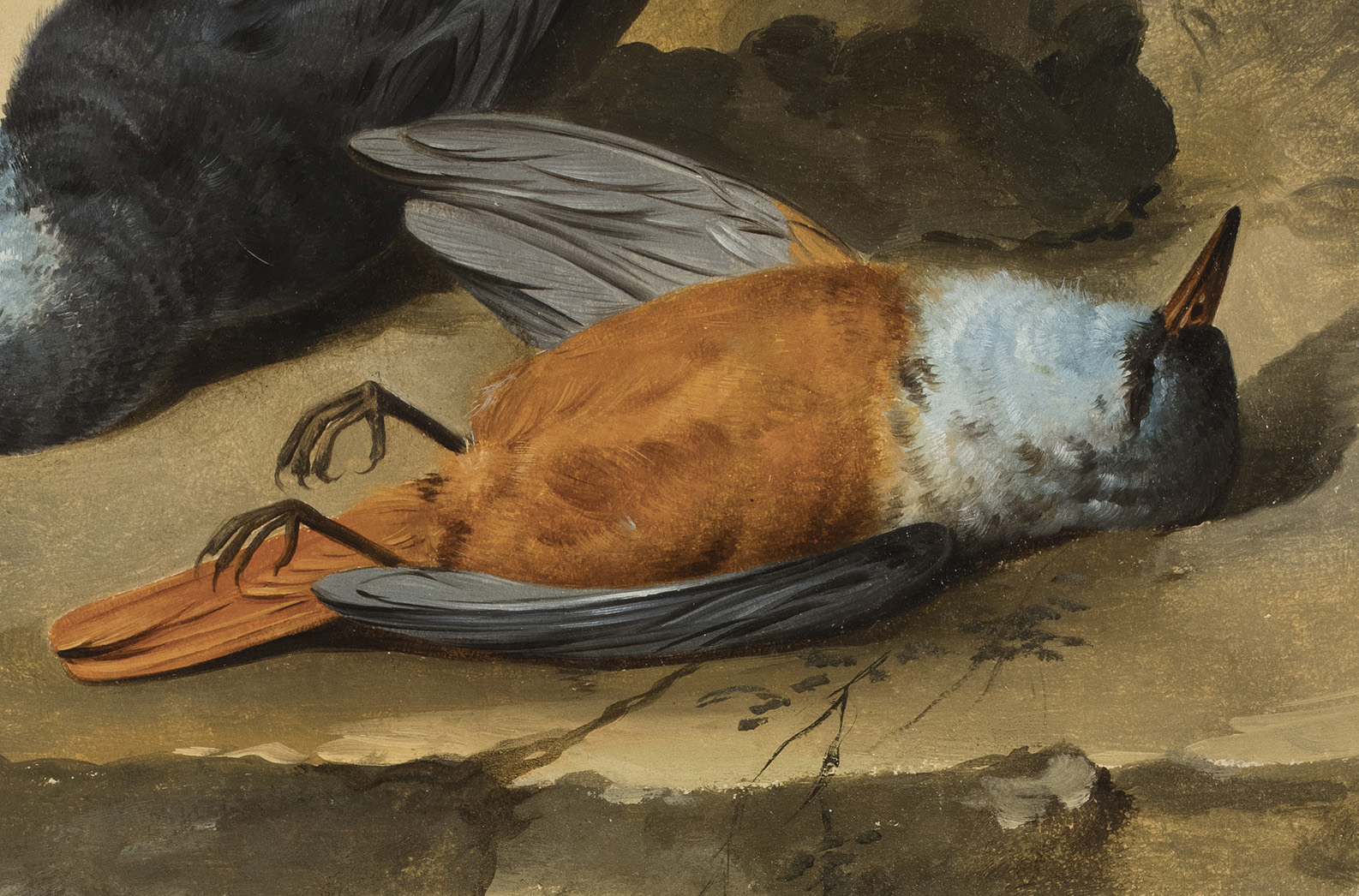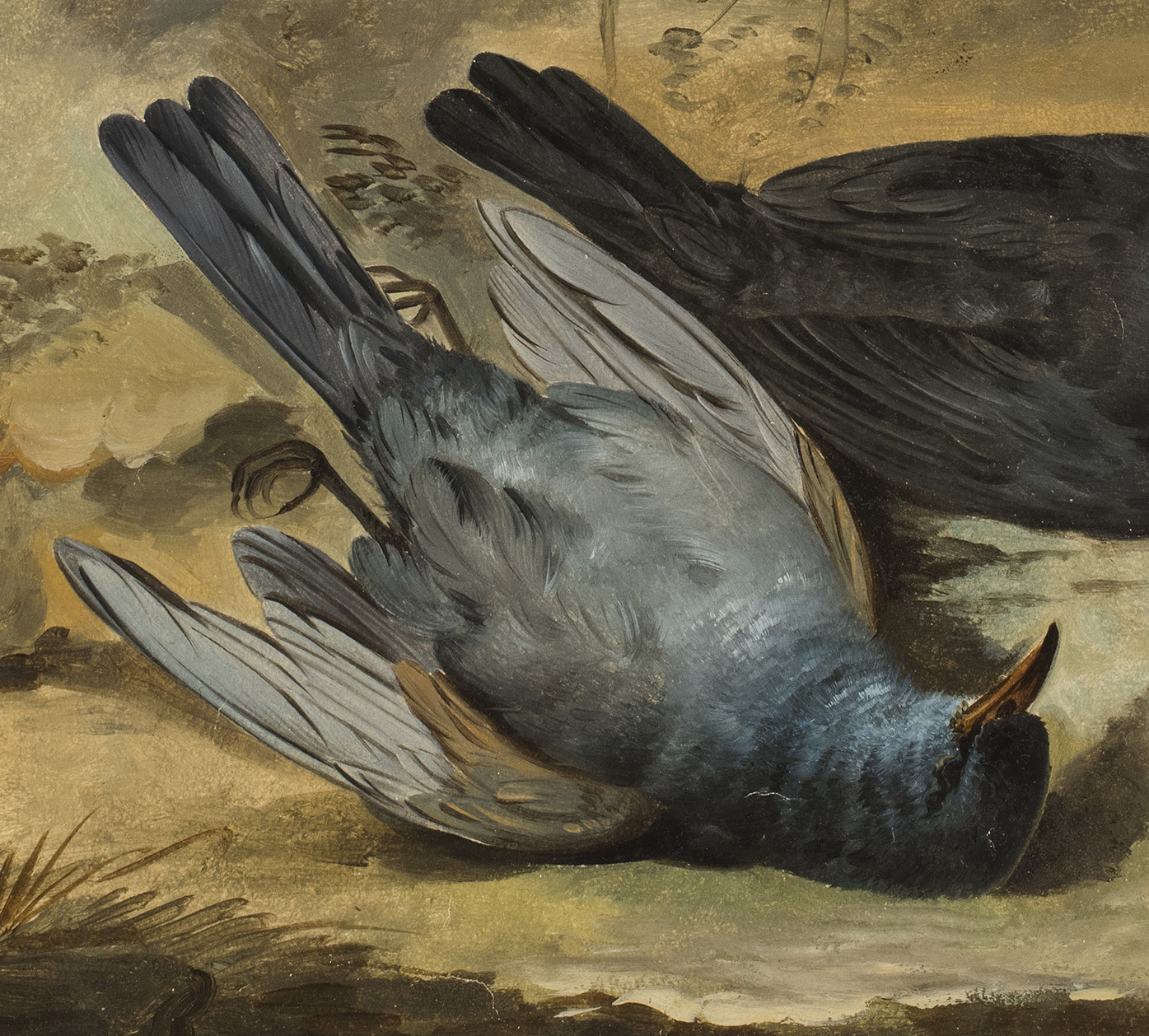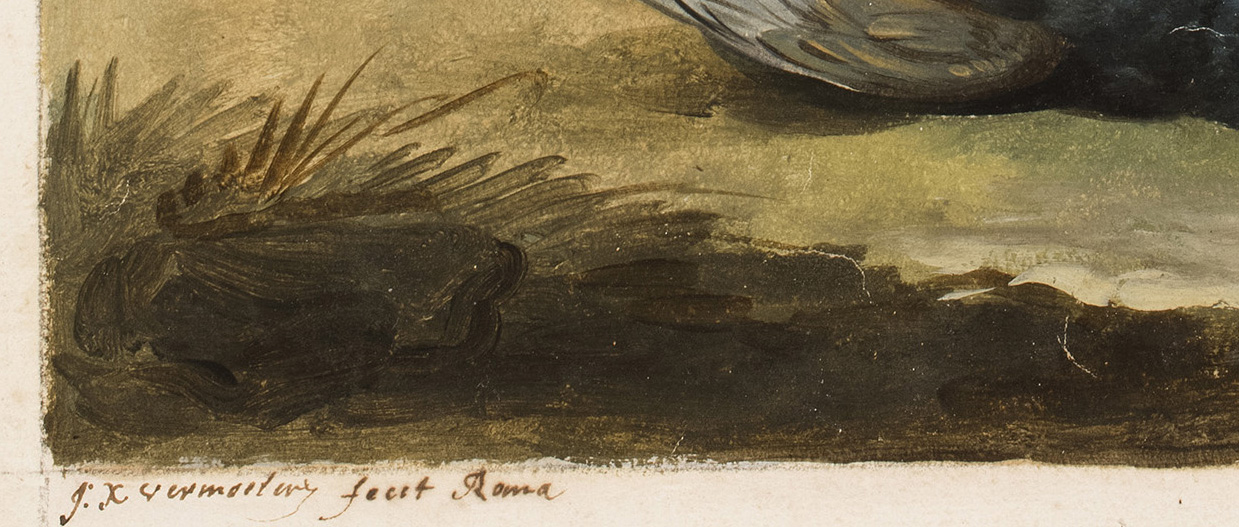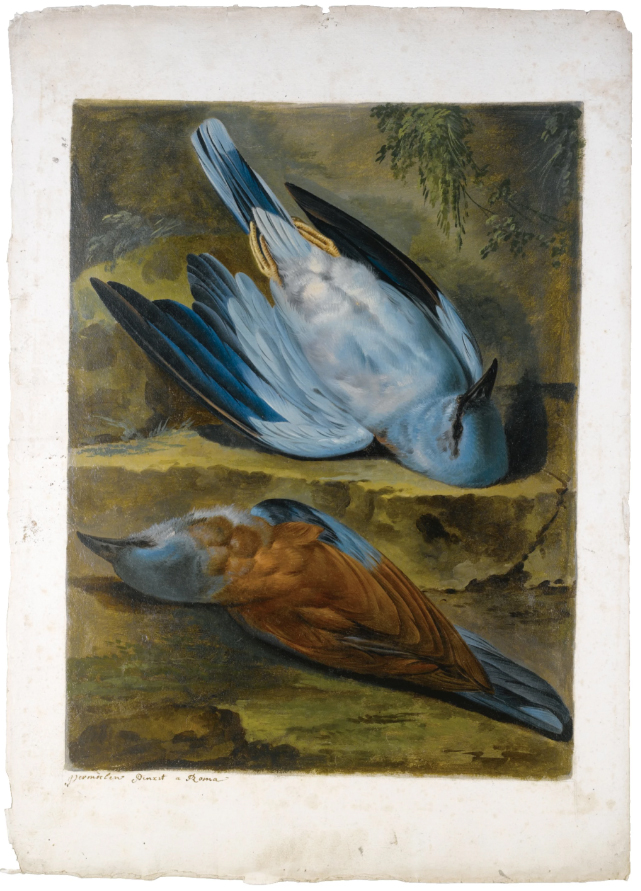JACOB XAVER VERMOELEN (Antwerp c.1714 – 1784 Rome)
Jacob Xaver Vermoelen (Antwerp c.1714 – 1784 Rome)
Four Birds on a Stone Ledge
Oil on paper or card, 55 x 39 cm, image size 48 x 32.5 cm
Signed ‘J.X. Vermoelen fecit Roma’ (pen and brown ink, lower left)
Provenance
~ Anonymous sale, Sotheby Mak van Waay, 21 March 1977, lot 126, repr.
~ Private collection, The Netherlands
***
Jacob Xaver Vermoelen was born in Antwerp, where he trained under Peter Snijers (1681–1752), and was listed as a member of the painters’ guild in 1733 and 1734.1 No subsequent record of his activity is known until 1748, when he was in Rome, and painted a pair of still-lifes with dead birds for Cardinal Silvio Valenti Gonzaga (1690–1756), Secretary of State under Pope Benedict XIV. The Cardinal was among the greatest collectors of the period, and he displayed the paintings in the Villa Valenti Gonzaga a Porta Pia (now the Villa Paolina).2 A small number of dated paintings is known, produced between 1751 and 1755, including examples at Uppark House and the museums of Visovice, Stuttgart and Schleissheim, the University of Würzburg and the Castle of Emkendorf in Holstein.3 It is thought that Vermoelen remained in Rome for the rest of his life. All his extant works are still-lifes with birds – although the artist is mostly forgotten today, his works were favoured in the highest circles during his lifetime: in 1764 two of his paintings from the collection of Clemens August, Elector of Cologne, were auctioned in Bonn, described as by ‘Jacob Vermoelen, Peintre de Rome’.4
Whilst in Rome, Vermoelen also produced a number of delicate oil sketches on paper or card, generally signed and inscribed ‘fecit Roma’ or ‘a Roma’. A very small number has survived: the first of which to become known to art historians were four studies sold at Sotheby Mak van Waay in Amsterdam in 1977,5 including the present work, which has recently been rediscovered. A further small number of oil studies was offered by Bob Haboldt in 2001.6 Our study of four birds is particularly related to Vermoelen’s study of Two Dead Rollers, which was also part of the Amsterdam group and was sold again in New York in 2011 (fig.).7 It would seem likely that all these studies were made from life; one or two of the birds from the oil studies re-occur in finished paintings by Vermoelen, for which they might have been preparatory, yet the appearance of his signature also indicates they were made as independent works, to be sold to collectors.
The two upper birds are a common rock thrush (Monticola saxatilis) and beneath it a blue rock thrush (Monticola solitarius), while on the lower ledge are two common blackbirds (Turdus merula).8 Vermoelen has depicted the birds with great accuracy, sensitivity and spontaneousness, in an ‘alla prima’ technique in this perfectly preserved sheet. The colour palette mostly consists of ochres, browns and greys, with minimal use of colour, blue and reddish brown. The background is sketched in an extremely loose manner, while the artist has dedicated more attention to the textures of the birds’ feathers, resulting in a very moving and pure ‘nature morte’, without the usual extra attributes favoured by painters of the period.
1. For the artist, see U. Thieme and F. Becker, Allgemenes Lexikon der bildenden Künstler, Leipzig 1907-1950, vol. 34 (1940), p. 280.
2. Both oil on canvas, 48.2 x 64.2 cm, signed and dated ‘j:x:vermeulen f. / Roma 1748’; Christie’s, London, 9 December 1994, lot 2, repr.
3. S. Rudolph (ed.), La pittura del ‘700 a Roma, Milan 1983, pl. 705.
4. Sale, 14 May 1764, Bonn, lots 3 and 4: ‘Deux Tableaux de sept pieds de longueur & cinq pieds six pouces de hauteur, répresentants diverse Venaisons, des Volailles mortes peintes en leurs grandeurs naturelles par Jacob Vermoelen, Peintre de Rome’.
5. Anonymous sale, Sotheby Mak van Waay, 21 March 1977, lots 39, 64, 114 and 126, repr.
6. Bob Haboldt & Co., Northern European Old Master Drawings and Oil Sketches, exh. cat., New York 2001-2, p. 158, cat. no. 66.
7. Oil on paper, 552 x 394 mm, signed ‘Vermoelen Pinxit a Roma’, Sotheby’s, New York, 26 January 2011, lot 671, repr.
8. We are grateful to Kees Moeliker and Klaas Post of the Natural History Museum in Rotterdam for identifying the birds.
